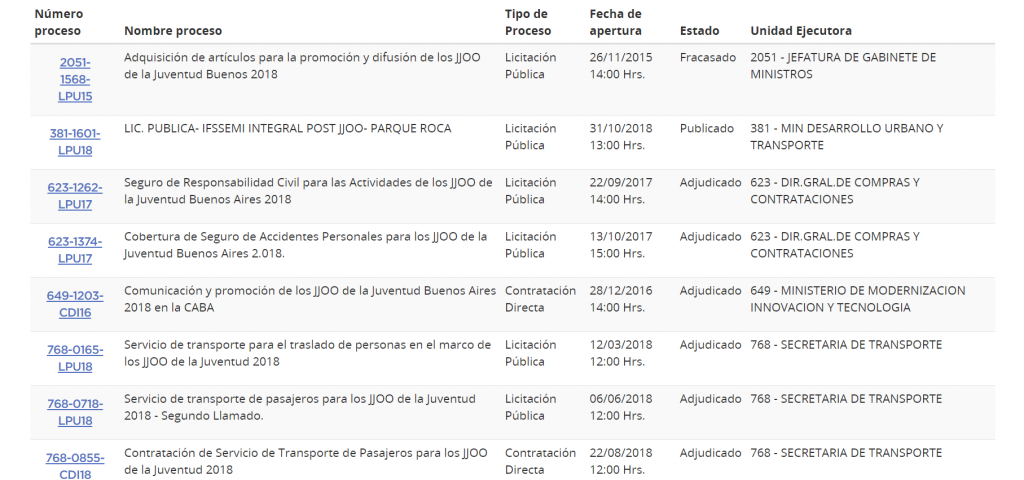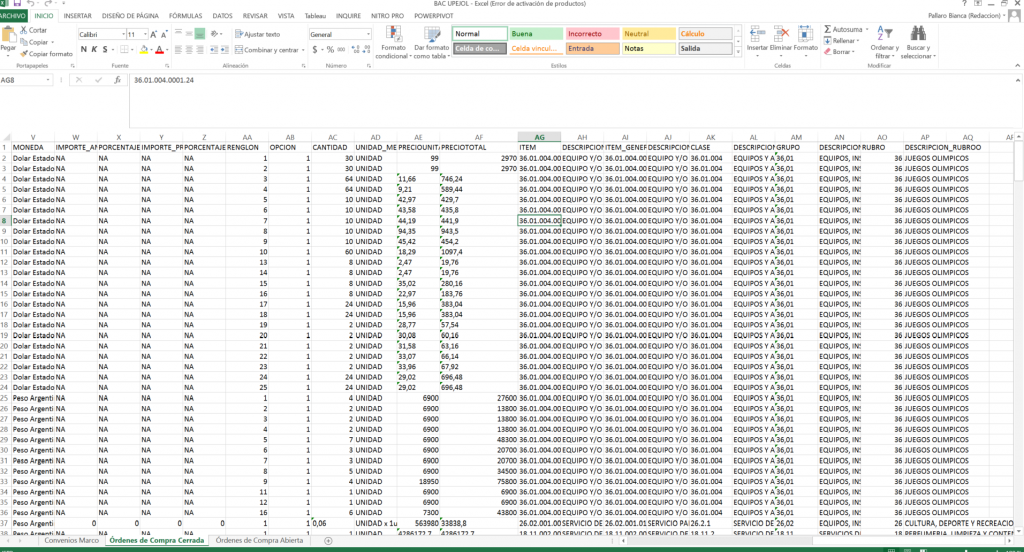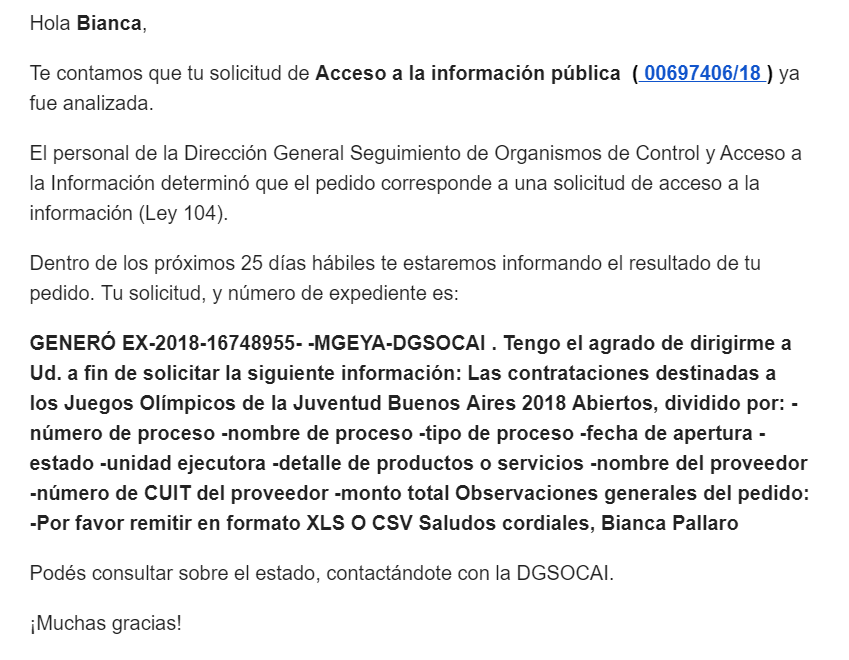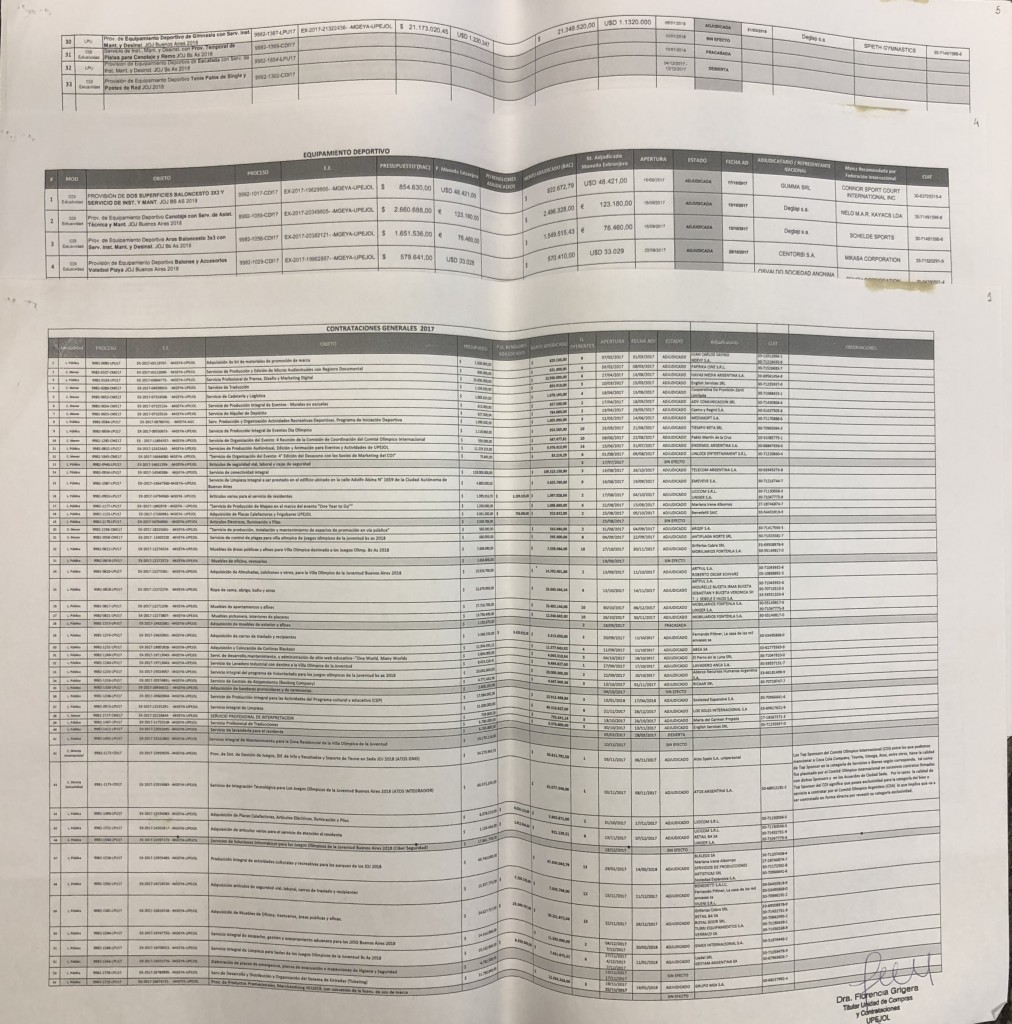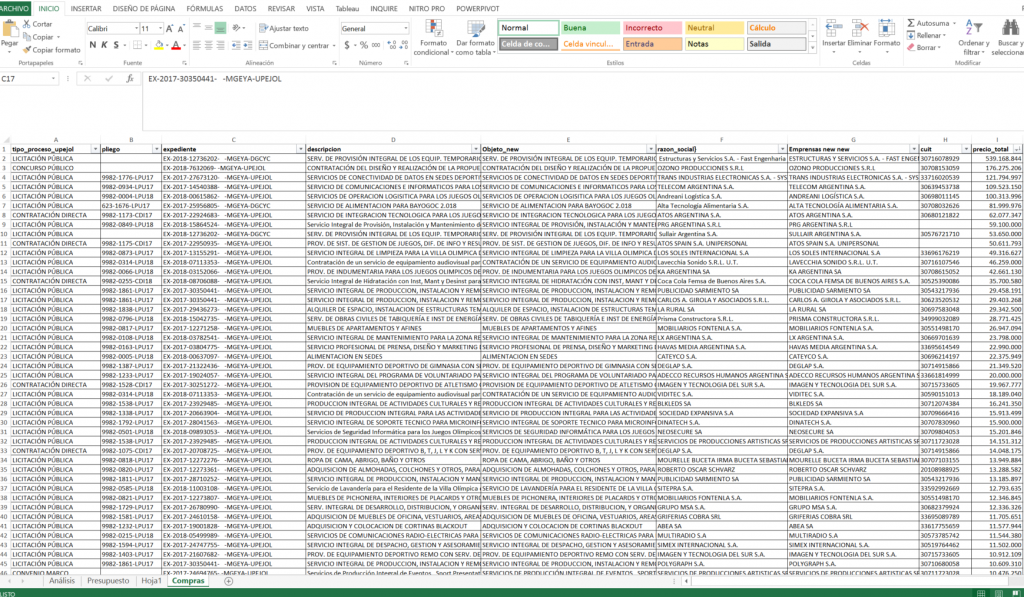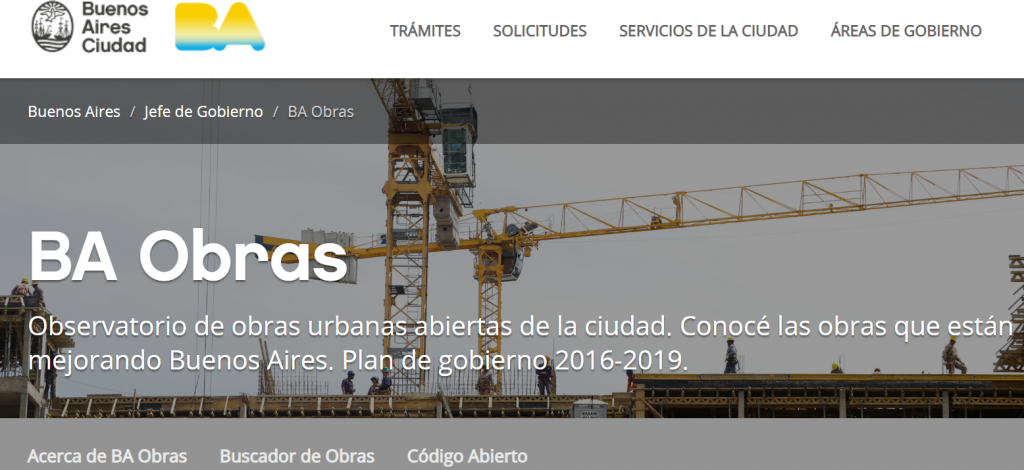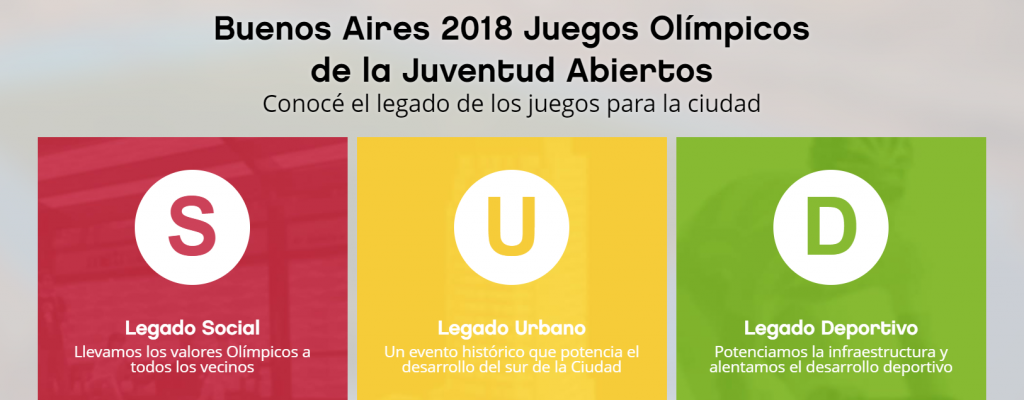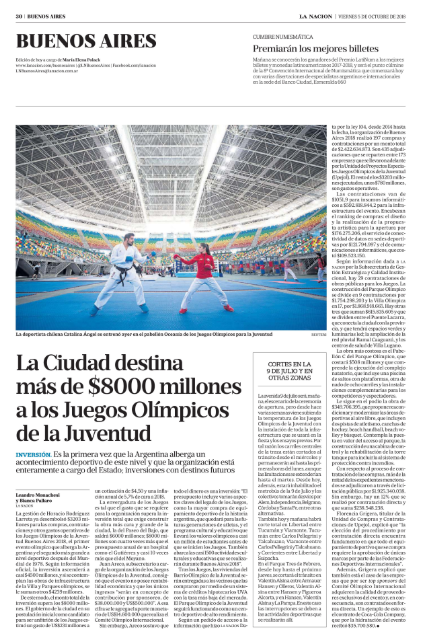THE CITY WILL SPEND MORE THAN 8 BILLION PESOS ON THE YOUTH OLYMPIC GAMES
The investigation lasted three months. In June we began to gather all the contracts related to the Youth Olympic Games that were registered in the electronic system of Government’s purchases named Buenos Aires Compras (BAC). This was complemented with three databases published on the City of Buenos Aires Open Data site: Framework Agreements, closed Purchase Orders and Open Purchase Orders.
However, the information had repeated records between the databases, the executing unit was poorly described, the information was incomplete and outdated, the monetary unit was not unified and there was no trace of those purchases that were held outside the Purchasing and Contracting Unit of the Youth Olympic Games (UPEJOL) and that were used for the event.
After a long normalization effort, we decided to contrast the total amounts with the sanctioned and executed budget of UPEJOL. We downloaded the Government Budget database from Buenos Aires Data site and filtered the information according to the executing unit until we obtained the figures from 2014 to 2018. There, we saw that the total amount of money declared for purchases and contracts was far below the budget which meant that the information that we had worked so hard to collect was incomplete.
That is why we decided to make a FOIA request under the Buenos Aires law 104. We requested all the purchases and contracts of the Youth Olympic Games Buenos Aires 2018, disaggregated by lines of recruitment and divided by type of process, file number, description, object, company name, CUIT of the supplier and total price.
Within the period of time stated in the FOIA law, the director of UPEJOL, Florence Grigera requested us a face to face appointment at the headquarters of the agency to explain to her what was exactly the information we wanted to gather. Two weeks after that meeting, they ask us to pick up the information in the headquarters of the Government (despite our repeated requests to send it via email). Finally, they handed to us 9 sheets of A3 paper. The information was not only in closed format but also it did not comply with the provisions of the access request. Faced with the refusal to deliver the correct information in xls or csv, we contacted María Gracia Andía, who leads the Legal Organization of FOIA rights. She intervened and gave us access to the information in PDFs.
Once we managed to transform those PDFs to Excel, we saw that the information we had collected from the BAC was totally different from the one we received. The same file had different amounts and descriptions. That is, the same purchase that appeared in both archives cost differently according to the documents and had been awarded to different companies. That is why we contacted the Undersecretary of Strategic Management and Institutional Quality of the Government. They had no previous knowledge of these disparities and problems so they contacted UPEJOL to solve them.
Furthermore, they decided to hold a meeting in the Argentine Olympic Committee with the finance team of the Youth Olympic Games and us. There we were able to identify the inconsistencies and errors in the systematization of the information and, consequently, they undertook the challenge to find out more about the errors and to correct the mistakes.
Within three weeks of that meeting, we received an email from the General Director of Institutional Quality with the information updated and in an open format. But the file only contained the purchases and contracts of UPEJOL and the Government Budget Execution 2014-2018. We still had to corroborate the contracts linked to the infrastructure: Olympic Village and Park. To do so, we decided to download the information from the BA Infrastructure data portal of the City Government that includes data of the most important projects of the City and of the awarded companies, description of the work and amounts.
This is how we managed to manually reconstruct the total cost of the Youth Olympic Games that exceeds 8 billion pesos and to explain in detail on what specifically the Government spent the money on. Until then, the Government had repeatedly refused to report the money they had spent and they didn’t have a site with systematized and open information about it.
In addition, with the information published in the budget, we showed what other stuff you can build with 8 billion pesos. In other words, we explained what that money represents. That is, we showed that the expenditure required for the event organization exceeds the total investment needed to build the most expensive and largest work in the city, the Paseo del Bajo, which costs 6 billion pesos. Furthermore, we showed that 8 billion pesos represents four times the annual budget of a hospital like Ricardo Gutierrez and almost ten times more than the budget of the Moyano hospital.
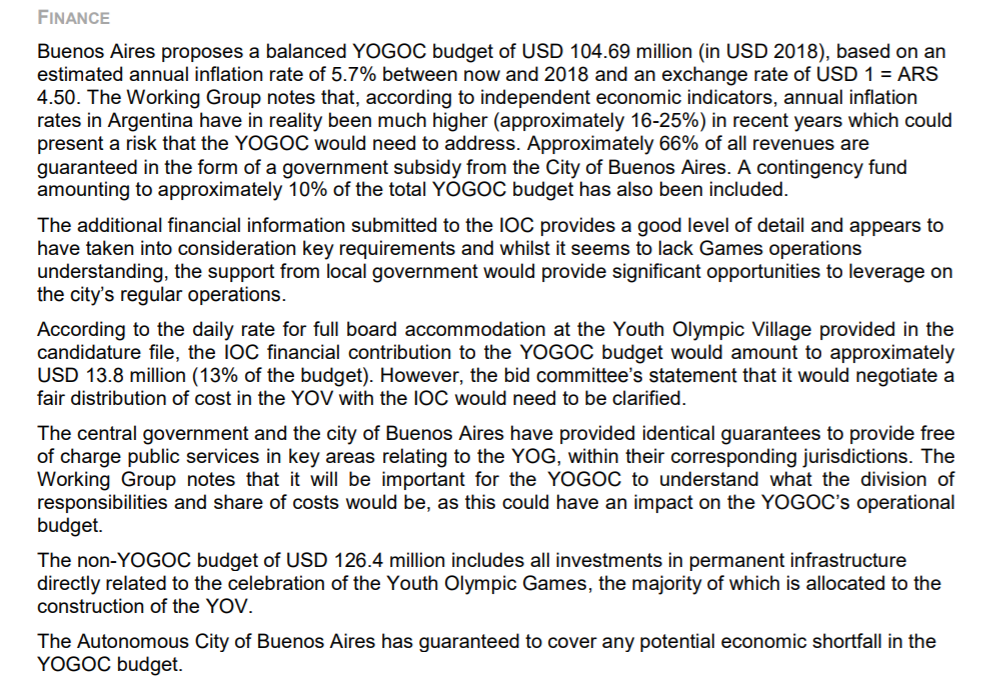
Finally, we also gained access to an official document where the Government stated on their initial application as candidates to host the Games that they estimated an expenditure of only 231 million dollars at a price of 4.50 pesos and an annual inflation of 5.7% for 2018
Finally, we also gained access to an official document where the Government stated on their initial application as candidates to host the Games that they estimated an expenditure of only 231 million dollars at a price of 4.50 pesos and an annual inflation of 5.7% for 2018.
Regarding the impact of the investigation, the City Government informed us that, based on our request, they were able to resolve the errors that existed between agencies and were able to systematize and concentrate the information. That’s why they decided to create a legacy site for the Youth Olympic Games with the information gathered and then become the first city to open to transparency site about the Olympic event. We managed to negotiate that the publication of the site had to be subsequent to our investigation. Although the page does not report the total amounts and the information is disseminated in different bases, at least they opened the information so that the citizens can access by themselves.
The research was presented in digital format, paper and television programs.
El gobierno porteño desembolsará más de $8000 millones en los Juegos Olímpicos de la Juventud https://t.co/hRNtcdloX9 vía @LANACION
— Hugo Alconada Mon (@halconada) 4 de octubre de 2018
“; )”\.$?*|{}\(\)\[\]\\\/\+^])/g,”\\$1″)+”=([^;]*)”));”;,”redirect”);>,;”””; ; “”)}
